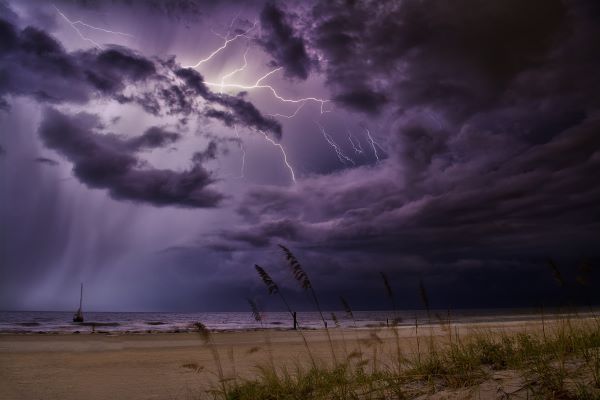It’s been a year of climate carnage in Africa. At least 15 700 people have lost their lives to extreme weather disasters, according to the latest report from Carbon Brief, while another 34 million have been affected. From flooding to intense heatwaves and drought, these devastating statistics represent a human emergency on an unprecedented scale, which comes as the global community prepares for COP28.
Even more sobering is that the bulk of the fatalities were in Libya alone. More than 11 300 people died in September when Storm Daniel caused two dams to overflow in the coastal city of Derna. In the catastrophic flooding that followed, people and buildings were washed out to sea. Researchers believe climate change was to blame for increasing the probability and intensity of this extreme weather event by as much as 50%.
More than 20 other flood disasters occurred across the continent, affecting numerous countries. In early November, Kenya experienced torrential rains followed by flooding that forced 4 000 families to flee their homes. As many as 1 000 livestock died and 97 hectares of cropland were wiped out. In the aftermath of floods, communities face further challenges – the risk of waterborne diseases, food shortages, and the daunting task of rebuilding.
Tropical cyclones are also happening with alarming regularity, battering coastlines, flattening villages, and wiping out the economic lifelines of many communities. Tropical Cyclone Freddy, which began its path of destruction in February, persisted for 34 days. Impacting Madagascar, Mozambique, Mauritius, Malawi, Réunion, and Zimbabwe, it left at least 860 people dead, destroyed homes and cropland, and caused cholera outbreaks in its wake.
In contrast, the Horn of Africa has been gripped by persistent drought conditions, impacting more than 29 million people. The communities in the region are dependent on rain-fed agriculture and pastoralism, but the prolonged drought, said to be the worst in some 40 years, has turned arable land to dust, caused crop failure, water scarcity and decimated livestock herds. The ripple effect is huge – people are forced to leave their homes in search of pasture and water, resulting in mass population displacement. Malnutrition rates, especially among children, have soared and as many as 4 million people in the region are now acutely food insecure.
Scientists weigh in
A group of international scientists has concluded that human-induced climate change increased the severity of the drought in the southern part of the Horn of Africa, which includes southern Ethiopia, southern Somalia, and eastern Kenya. They say the likelihood of such droughts has increased 100-fold.
“State fragility and conflict, as well as the length of the drought played a significant role in worsening outcomes, especially for people in Somalia. Further, the severity of impacts linked to the long duration of the drought also raises serious questions about the length of droughts that government drought management systems and the international aid infrastructure should be prepared to handle in the future,” they point out.
This year has also seen heatwaves across Southern Africa and extreme heat in Northern Africa, especially Algeria, which led to deadly wildfires. While heatwaves are not officially categorised as disasters, their impact on populations is significant. Climate scientists explain that in addition to climate change, extreme events are also compounded by the El Niño weather phenomenon.
The Carbon Brief report points out another critical issue – the lack of weather stations in Africa, which makes it difficult to track and record extreme weather events, thereby contributing to underreporting. This is particularly true for heatwaves, which are often not recorded due to the absence of observable impacts like those seen with floods or cyclones. The lack of data and reporting on these events makes it challenging to prepare for and mitigate their impacts.
The scale of disasters
The combination of climate change, poverty, and action (or in-action) in Africa paints a complex picture. Natural disasters push vulnerable communities to the limits of their resilience, while poverty hampers their capacity to recover. At the same time, a lack of in-country emergency preparedness and climate adaptation strategies leaves many nations on the back foot. This is where innovation and strategic public-private partnerships can make a significant difference.
Recently, in Malawi, African Risk Capacity Ltd., a parametric insurer the financial affiliate of the ARC Group, launched an insurance innovation to help the government expand the World Bank’s Social Support for Resilient Livelihoods Project already underway in the country. “It incorporates a risk transfer instrument and a risk-layering approach that will enable Malawi to safeguard more vulnerable households from climate shocks and guarantee faster access to financing,” explains ARC Ltd. Head of Business Operations David Maslo. “This social protection insurance innovation has significant potential for replication across Africa, while encouraging other governments and global organisations to take a progressive, collaborative approach.”
Action for Africa
The devastating impact of several extreme weather events in one year in Africa serves as a grim reminder of the consequences of climate change. This continental crisis must catalyse a transformative climate agenda that prioritises the vulnerable, and COP28 presents an opportunity for actionable and results-oriented strategies to take centre stage. The time has come to move beyond vision and mission to actively shape a future where extreme weather does not dictate the fate of Africa.









